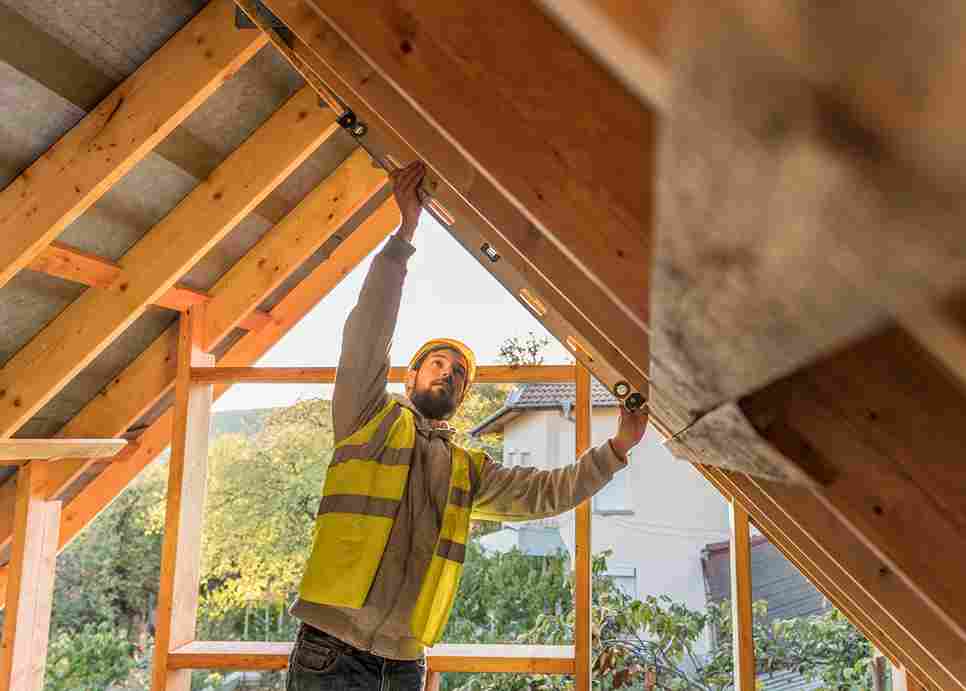Roof Insulation in Sydney Australia
With over 15 years of experience, we are leading roof insulation installation contractor in Sydney ,Wollongong and Central coast.
Roof insulation is the intervention aimed at improving the comfort of the entire house to reduce the heat exchange between indoors and outdoors. The roof of a home is, in fact, the part most exposed to temperature variations, which influence the internal temperature of the building and generate waste of energy for heating or air conditioning the internal environment. A poorly insulated or non-insulated roof loses a lot of heat during the winter months and is one of the leading causes of overheating in the summer.
How important is roof insulation in Sydney?
The weather in Sydney is extremely hot in the summer and cold in winter. With roof Insulation, one can spend quality of life in these climatic conditions. We at Ali Rapid Insulation provide you with the best home insulation solutions.
The roof is part of the building that protects the house from external influences such as rain, heat, and cold and ensures a cozy microclimate inside. However, these external influences have a significant impact on the condition of the roof.
Severe weather changes can affect the structural parts of the roof.
An unattended or leaking roof often causes significant heat losses. As a result, around 30% of heat is wasted through a low-maintenance roof. Along with the heat, the building also loses its coziness and comfort.
For this reason, it is extremely important to find a way to reduce heat loss through the roof by properly insulating this part of the house.

What type of roof should you insulate?
Ali Rapid Insulation is an expert in Insulating all types of roofs in Sydney. The following are the most common type of roofs we insulate
- Gabled roof
- Flat roof
- Skillion roof
- Hip roof
- Curved roof
- Butterfly roofs
How roof insulation insulation is carried out?
How to insulate depends on the design of the house. For example, there is a difference between insulating a roof with an open ceiling and insulating a closed ceiling.
If the attic is not used as a room, insulating only the attic floor may make sense. This is the easiest way to insulate ceilings. The area to be insulated is often easily accessible, and the aesthetic result has very little to say, as the insulation will not be visible anyway. If the attic floor is open, insulation must be provided between the beams. Here there is often old insulation. This must be examined for moisture and wear. If it looks nice, the new insulation can be laid over it. It can be removed if there is old filler, such as clay or sawdust. Sawdust can, for example, is sucked out with a pump.
A total of at least 35 cm must be insulated on the ceiling. It is essential that a wind barrier is installed at the air shaft and that the wind barrier does not cover this shaft when protecting it. The air shaft ensures sufficient ventilation and prevents moisture damage. In addition, the vapor barrier must be tight and located on the warm side of the insulation.
When insulating the roof, it is essential to remember that the conditions for ventilation and temperature change. Therefore, ensuring that the new insulation also provides sufficient air circulation is essential. This is a prerequisite because insulation must transport old and fresh air out, dry out condensation, and prevent moisture formation.
To insulate pitched ceilings, paying attention to the air gap is essential. For the roof to dry out, vapor-permeable materials must be between the air gap and the insulation. The air gap must also have access to open air both at the roof ridge and overhang. Such a gap has two properties. First, it allows moisture to escape from the structure while helping to prevent snow melting and ice formation on the roof.
The insulation should preferably be laid outside the supporting structure, as it leads to smaller thermal bridges. However, it is only sometimes possible to implement, and insulating the inside will be easier and cheaper.
Products recommended for Roof Insulation in Sydney
Ali Rapid Insulation recommends the products of Bradford for Roof Insulation. We recommend them due to their quality.
Roof Insulation with Glass Wool
Glass wool keeps heat in on cold days and out on warm days. In addition to being used as a thermal insulator, and has excellent performance as an acoustic insulator. Noise entry from outside will decrease due to glass wool installed inside walls and ceiling. You can add the R-values of the materials in the roof of any construction to analyze the level of comfort you will obtain.
The ability of the insulation to decrease the transfer of heat or cold is called thermal performance. R-value measures determine the performance of an insulator and are determined by the density of the material and its resistance to the passage of heat. The higher the R-value, the better the thermal performance will be during the year, translating into an increase in comfort and the control of energy use.
Insulation of the roof with Polyester
One more thermal insulation alternative is polyester. It is made from recycled PET plastic.
In addition to being a more sustainable option, it also has excellent durability. It can still be found in rolls or blankets.
Why insulate the roof in Sydney?
Homes and commercial properties that are not effectively insulated can lose approximately a quarter of their heat through the roof.
Insulation helps maintain the building’s optimal temperature and can make the loft livable, create an extra bedroom or turn a flat roof into an inviting terrace or green top.
Insulation of a flat or pitched roof – or the ceiling – can help to:
- Avoid heat loss
- increase a property’s energy efficiency
- Save money on the heating bill
- Reduce a property’s CO2 footprint
- Improve the indoor climate
Cost to install roof insulation in Sydney Australia
Every property is different. With different sizes and dimensions of flat or pitched roofs and budgets and bills to consider, there is no one-size-fits-all solution.
The savings that residential and commercial properties can achieve are more than enough to compensate for the cost of roof insulation. So in terms of the money that can be saved, the energy consumption, and the reduction of the CO 2 footprint, a roof insulation
With the money that can be saved, the lower energy consumption, and the carbon footprint reduction, roof insulation is an investment that clearly pays off.
Ali Rapid Insulation offers several calculation programs to help you when working with our products and solutions. Among other things, we have a calculation program that is used to calculate the U-value of different types of warm roofs.
Roof insulation on older houses
The effect of insulation is measured in U-value. Good insulation results in a low U-value. As insulation requirements have increased since the 1990s, many older houses will have little or no roof insulation. Here, the most significant savings are on post-insulation. The current need for roof insulation is a maximum of 0.12. The requirement for the thickness of the insulation has also become stricter. Today, the condition is approx. 300 mm. Until the 1990s, the insulation was rarely thicker than 100-200 mm. If the house is older, there may be less or no insulation. Supplementing the insufficient insulation in more aged homes will significantly affect both heat loss and quality of life.
Trend of roof Insulation from the outside in Sydney
Rather than insulating the roof from the inside, you can also Insulate the roof from the outside. This has the advantage of making the roof more energy efficient without tearing down the existing roof covering. You also avoid reducing the internal usable area, as the additional insulation occurs outside.
In practice, however, insulating the roof from the outside will only be possible in connection with replacing the entire roof, as it requires removing the existing roof coating and is a tremendous renovation job. Instead, the insulation material is placed between the rafters before installing a new sub-roof and roof covering. It may be necessary to fit extra spacer battens on top of the rafters to make room for the desired insulation thickness.
Re-insulating the roof will usually be a requirement when renovating the roof structure. However, this will depend on the profitability of the post-insulation, just as this legal requirement only applies if it is below 50 percent. Of the roof that is being repaired. You can read more about legal requirements for additional insulation during roof renovation in the section ” Is there a requirement for additional insulation during roof renovation?” ‘.

